Class A: The Dawn of the Performance Age
Class A winner 1930 Bentley 4,5 Litre Blower Two Seater Drophead Coupe Gurney Nutting introduced from The Lee Collection United States |
|
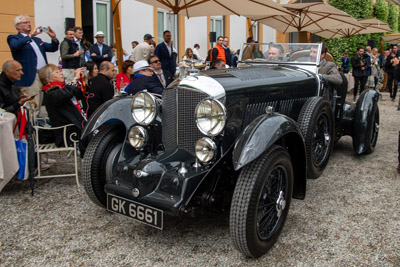 |
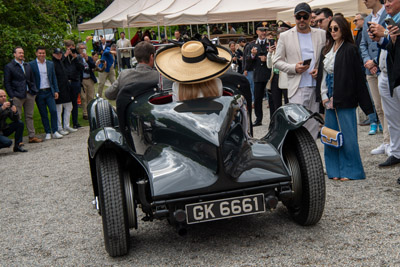 |
| Class A Mention of Honour: 1927 Bentley 3 Litre Open Tourer Van den Plas presented by Michael Dacre United Kingdom see also BENTLEY 3 LTRE Le Mans 1924 1927 |
|
Class A: 1923 DIATTO TIPO 20S Torpedo Mouche & Cie presented by Corrado Lopresto (I)
The Italian automotive manufacturer Diatto was founded in Turin in 1835 and started out by producing horse-drawn carriages. Diatto soon realised that the future would belong to the motor car and in 1905 the carriage maker began to manufacture vehicles under licence from the French brand Clément Bayard before developing proprietary model from 1909 onwards. In 1916 the company engaged in licence with Bugatti based on the Bugatti Type 13 four cylinder engine. Diatto then went on to produce cars under Maserati licenses, presenting the Tipo 20 in 1922. This was the brand'best known model and it enjoyed production until 1927. In 1923 the Tipo 20 was upgraded to Tipo 20S with 75 hp rather than 40 hp of the standard model. |
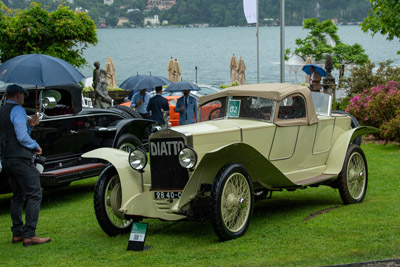 |
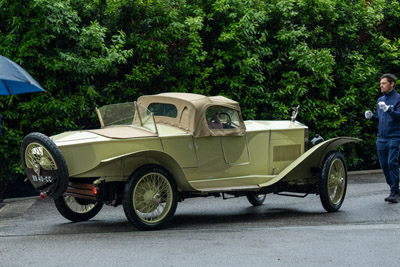 |
Class A: 1927 ISOTTA FRASCHINI Tipo 8 AS Roadster Fleetwood presented by Nicholas and Shelley Schorsch (US)
Isotta Fraschini introduced their fabulous Tipo 8 AS from 1926 to 1932. The new 7,4 litre straight-eight engine delivered a muscular power increase over the former 5,9 litre engine and pruced 120 hp. Isotta Fraschini wanted to create a particularly glamorous image in the USA and targeted the new American aristocracy. Certainly one of the marque's biggest fans was Rudolph Valentino. The star of silent movies owned several Isottas and commissioned this roadster. The roadster body was originally designed by Le Baron of New York City, and built by Fleetwood also based in NewYork. |
|
CLASS B: Shaped by the Wind: The Evolution of Aerodynamics
Class B winner: 1934 Cadillac V16 Coupé Fleetwood introduced by Donald Ghareeb United States
Ironically, the only 16 cylinder car ever produced in significant numbers came onto the market during the Great Depression. The Cadillac V16 had a displacement of 7,4 Litres and generated some 180 hp. Built on a 3,91 metre wheelbase- generous even for e seven seater saloon body- it was used here to support a two door coupe coachwork.
The body for this rare Coupe style was built by Fleetwood and styled to a design penned by Harley J. Earl, Head of Style at General Motors. This is one of just five Coupes built. |
|
|
 |
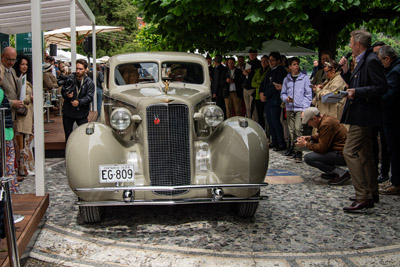 |
| Class B: Mention of Honour: 1948 Delahaye 135M Cabriolet Faget & Varnet introduced by Teresa & David Disiere United States |
|
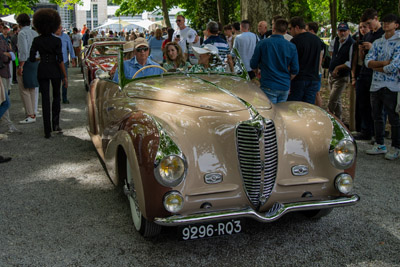 |
 |
Class B: 1936 Aston Martin 2 Litre 4 Door Saloon Prototype presented by Norbert Hieber (DE)
Following on from the successful racing cars with a displacement of 1,5 Litres, Aston Martin developped a 2 Litre engined saloon car for 1936. The saloon was intended as an everyday road car. When the prototype made its debut at London's Olympia Motor Show in 1936, it was initially heralded with great enthusiasm. However, the unorthodox design led to the car's being given the less than flattering soubriquet of "Donald Duck". The prototype was anything but ready for production and EML132 was gradually improved and developped over the next few years. Finally it never reached production and the prototype was sold in 1942. |
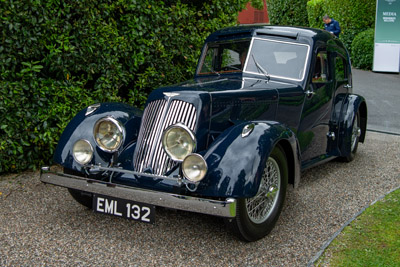 |
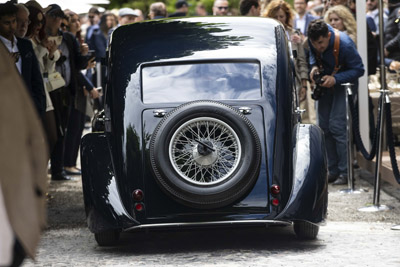 |
ClassB: 1938 LAGONDA V12 RAPIDE introduced by Christoph Zeiss (CH)
In 1935 W.O.Bentley was recruited by Lagonda as chief engineer, following the sale of his own Bentley company to Rolls Royce in 1931. His mission was to work on a range of new engines and chassis. In 1937, the Lagonda V12 was introduced as a completelynew model and production continued untill 1940. |
|
|
Class B: 1952 Ferrari 225S Tuboscocca Berlinetta Vignale introduced by Arnold Meier (CH).
In early days of Ferrari, Giacchino Colombo was the genius who joined the Ferrari development team from Alfa Romeo. Colombo worked alongside Aurelio Lampredi to develop and enhance the famous V12 Ferrari engines. The displacement of the engines was continually increased and the technology refined. The first evolution was the 2 litre engine installed in the 166. Shortly afterwards, the capacity was increased to 2,7 litre for the 225 and soon the V12 was beefed up to 3 litre to power the 250. The marque was only five years old and yet was already enjoying huge success. in 1952, the 225S won the Monaco Grand Prix, organised as a sports car race, while the Mille Miglia was won by its rather more powerful version the250S. see also FERRARI 225S Berlinetta Vignale 1952 |
|
 |
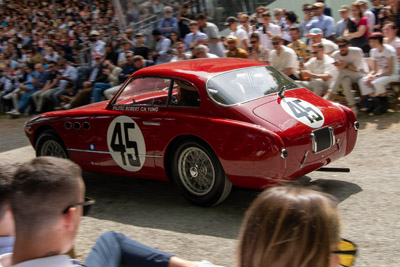 |
CLASS C "The Best Car in the World" for 120 Years: Rolls Royce celebrates an Historic Birthday
Class winner: 1933 Rolls Royce 40/50 HP Phantom II Continental, Fixed Head Coupé Freestone & Webb presented by Lord Bamford from United Kingdom
The Rolls Royce Phantom II was the third and last of the Rolls Royce 40/50 HP models, replacing the New Phantom from 1929 onwards and built until 1935. This was the last of the large six cylinder motor cars whose development was still entirely under the control of Henry Royce himself prior to his death in 1933. An improved version of the 7,7 Litre Phantom engine was installed in a completely new chassis. The standard wheelbase of the Phantom II was 150 inches (3,800 mm) and a total of 1,681 chassis were built at the Rolls Royce factory in Derby. 281 chassis of the Phantom II were constructed as Continental versions, with a shorter wheelbase and sportier set up - though the short chassis with a wheelbase of 144 inches (3,700 mm) was not exactly diminutive. |
|
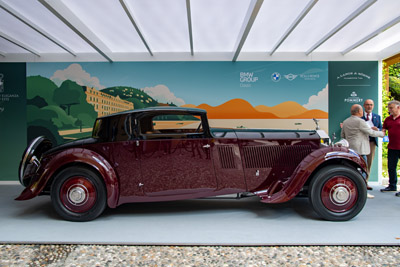 |
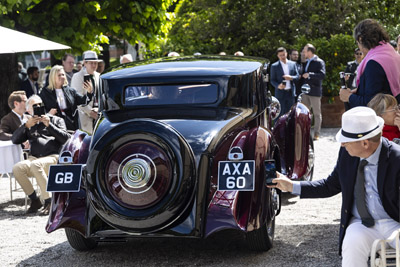 |
Class C Mention of Honour: 1914 Rolls Royce Silver Ghost Torpedo Grand Luxe Van den Plas introduced Terence George Bramall from United Kingdom
The Rolls Royce 40/50 HP powered by its seven litre six cylinder engine was one of the most technically progressive cars in the world. The ride was incredibly smooth and silent back in the day and the handling was virtually effortless. This superlative vehicle was first exhibited at London's Olympia Show in 1906. The name Rolls Royce Silver Ghost originally referred to a single example. In April 1907, a chassis with a Barket Tourer body finished in silver was completed and given the appellation "The Silver Ghost". Rolls Royce legendary moniker "The Best Car in the World" can be back to an advertisement in an issue of 'The Times' from 13th November 1908: "In July, Lord Montagu declared that THE SIX CYLINDER ROLLS ROYCE was the BEST CAR IN THE WORLD". This is the first known instance of those immortal words being seen in print. The model that really established the reputation of the 40/50 HP was the 'London to Edimburg'chassis. In 1911, Rolls Royce set out to beat Napier's London to Edimburg record for speed and fuel economy.In order to achieve its objective , the company developed a car styled with a highly minimalistic body, a bigger carburettor higher compression and a string of other exciting details. This London to Edimburg chassis was finished in March 1914 and subsequently shipped to Van den Plas Coachbuilders in Belgium. It was fitted with a revolutionary Torpedo Grand Luxe body featuring a full disappearing hood configuration and a seamless one piece aluminium body. |
|
|
|
Class C: 1923 Rolls Royce Silver Ghost 40/50 HP Springfield Dual Cowl Phaeton with body by Pall Mall introduced by Jack Boyd Smith Jr. from United States.
Even enthusiasts often forget that Rolls Royce manufactured vehicles in the USA. In the early 1920s, Rolls Royce built a factory in Springfield Massachusetts primarily to avoid the high import duties levied on vehicles coming into the USA.
Initially, cars were only assembled at this factory with all the parts imported to the USA from England. However the plant in Springfield soon began to work with American suppliers and this increased the vertical range of manufacturing. The quality of the Rolls Royce cars built in Springfield was soon equal to that of the vehicles produced in England. From 1926 to 1931 the Phantom I was built here, and the most striking external difference from the vehicles built in England was that all US vehicles were left hand drive. The car shown here was completed in 1924 and served for two years as a demonstrator. The first private owner acquired the car in 1926 and asked Rolls Royce to fit a Pall Mall body.It is one of only two surviving Pall Mall Tourer Dual-Cowls built in America. |
.jpg) |
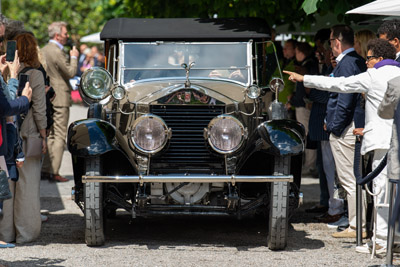 |
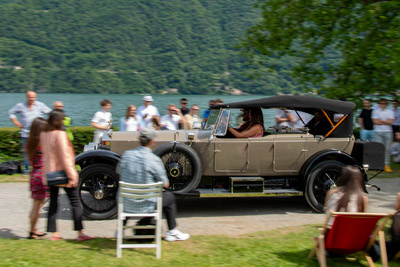 |
Class C: 1938 Rolls Royce Phantom III Fixed Head Coupé Hooper introduced by Fritz Andreas Neidhart (DE)
The Rolls Royce Phantom III was the marque's flagship from 1936 to 1939 and was the only Rolls Royce to be fitted with a 12 cylinder engine until the Rolls Royce Silver Seraph came along in 1998. The V12 powering the Phantom III had a displacement of 7,3 litres and reached a top speed of 140 km/h (87 mph). This is the only two door body styled by Hooper for a Phantom III. |
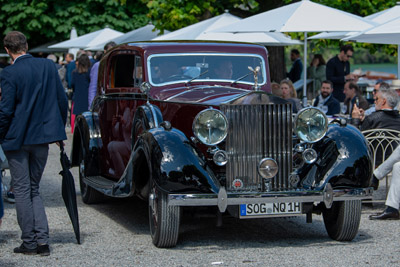 |
 |
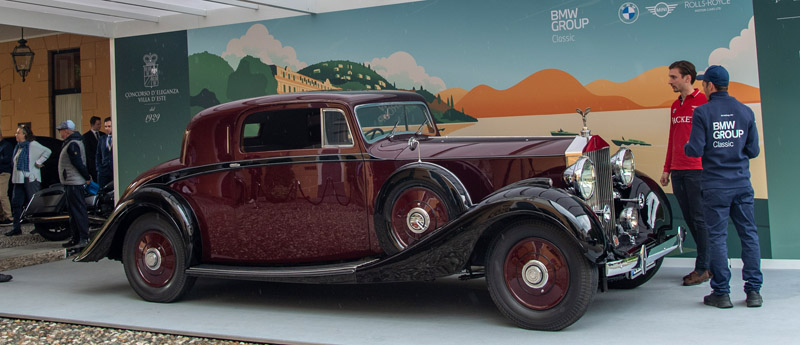 |
CLASS D : "Faster!" : The Arms Race on the Road
Class winner: 1957 Ferrari 335S Spider Scaglietti presented by Brian Ross frm United States
The Ferrari 335S won the 1957 World Sports Car Championship powered by its 4 litre V12 engine with an output of around 390 hp. Four of these hugely desirable cars were built. |
|
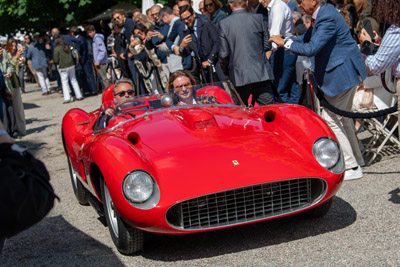 |
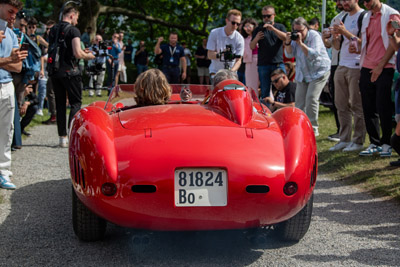 |
| Class D: Mention of Honour: 1960 Ferrari 250 GT SWB Berlinetta Scaglietti presented by Bernard Lezaire from Netherlands see also FERRARI 250 GT SWB 1959 |
|
|
Class D: 1955 Mercedes Benz 300 SL Gullwing Coupe Aluminium Sindelfingen proposed by Wirtgen Invest Holding Gmbh (DE)
The Mercedes Benz 300 SL "Gullwing" was first presented at the New York Auto Show in 1954, and it created an absolute sensation with its remarkable gullwing doors. The highly torsion resistant tubular spaceframe-welded together from thin steel tubes- runs from front end to tail at knee height. It simply wasn't an option to install doors that would open in the conventional way. The resulting very high side skirts also increased protection for the occupants in the event of a side impact. The uniquely unmistakable body design was based on the 300 SL prototype innovatively penned by Chief Stylist Friedrich Geiger. The prototypes had already won the 24 Hours of Le Mans in 1952 and crucially the Panamerica. The proposed production model was relatively heavy weighing in at 1.295 kilograms. A visually identical body made entirely of aluminium combined with thin glass and other lightweight elements allowed to reduce weight by 92 kilograms. The 21st aluminium 300 SL built is the only one delivered in Graphite Grey (DB190) upholstered in Fawn Tex-Leather (L2). see also MERCEDES BENZ 300 SL Gullwing Coupe 1955 |
|
Class D: 1960 Aston Martin DB4 Gt Zagato Coupé introduced by Andreas Halvorsen from United States
The Aston Martin DB4GT clothed in a Touring Superleggera body came in 1959. In competition it proved to be too heavy compared to the Ferrari 250 GTdespite its shorter wheelbase. Former racing driver and British representative of Zagato in England, Tony Crook mediated a contact between Aston Martin and the Milanese coachbuilder, known for extremely light and aerodynamically sophisticated bodies. The new Zagato DB4GT was originally presented at the London Motor Show in 1960 with an upgraded engine configuration producing about 280 hp. Only 19 Coupés Zagato were built between 1960 and 1963. see also ASTON MARTIN DB4 GT Zagato 1960 |
|
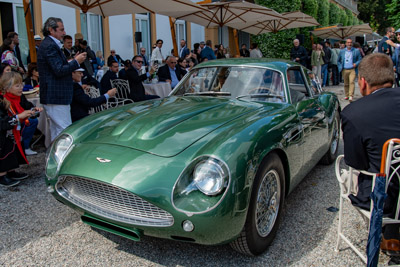 |
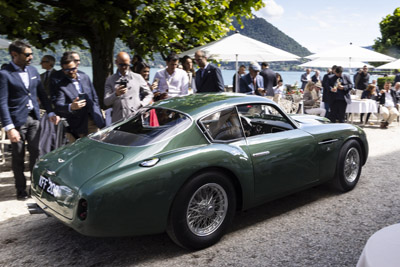 |
Class D:1962 Ferrari 250 GT SWB Speciale Aerodinamico Coupé Pininfarina introduced by William E. Heinecke (TH)
This 250GT was produced as a custom order in July 1962 at a time when Ferrari was manufacturing the sportiest and most advanced 250 GTs while preparing the 250 GTO. The coupe was the final example in a series of just four cars to receive a very special hand-built body by Pininfarina. The design combined the elements of the 250 GT Coupé front profile with those of the 400 Superamerica Coupé Aerodynamica.
In August 2014, a Ferrari 250 GT Shot Wheelbase Speciale Aerodinamica by Pininfarina (chassis 3615) was sold for US$ 6,875,000 at a BONHAMSAuction. |
|
 |
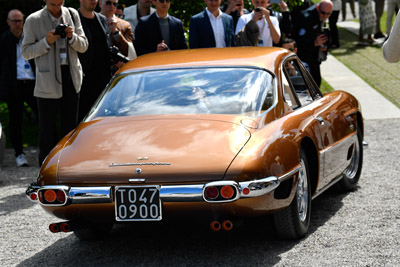 |
Class D: 1973 Porsche Carrera RS 2,7 introduced by Andrea Recordati (IT)
One of the most significant and sought after air cooled 911s ever produced, the RS 2,7 was the first of the line to feature the "Carrera" moniker. The name honoured Porsche's success at the Carrera Panamericana competition in the early 1950s. The entire two-year RS/RSR production was limited to a mere 1,580 cars with only 200 examples in factory Lightweight configuration.
In 2018, one 1973 Porsche 911 Carrera RS 2,7 Touring was sold for Euros 511, 250 at Paris RM Sotheby auction.
In 2022 one 1973 Porsche 911 Carrera RS 2,7 was sold for US$ 1,072,500 at Mecum auction in Monterey while a 1973 Porsche 911 Carrera RS 2,7 Lightweight was sold for Euros 1,285,500 at RM Sotheby auction in Monaco.
see also Porsche 911 RS 2,7 1973 |
|
 |
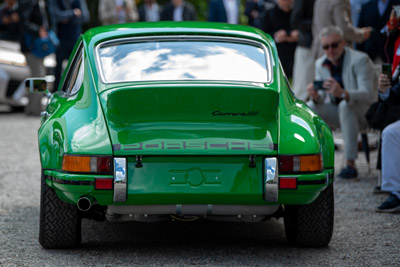 |
Class D: 1967 Lamborghini Miura P400 Coupé Bertone introduced by Barry Fitzgerald (AU)
see also Lamborghini Miura 1966 1972 |
|
CLASS E: The Best of Italian Grace and Pace: Maserati at 110
Class winner 1956 Maserati A6G/54 Berlinetta Zagato introduced by Roberto Quiroz from Mexico
see also Maserari A6G 2000 Zagato 1954 1955 |
|
Class E Mention of Honour 1955 Maserati 3500 Spider Vignale Prototipo introduced by Phil White from United States
The Maserati 3500 GT Coupe came into the market in 1957 wearing a standardised Touring body. In 1958, Touring had already built the first two prototypes of the open-top 3500 GT Spider version. However , the order for series production was ultimately placed with Vignale. In contrast to the coupé, the bodywork was largely made of steel because aluminium would not have been robust enough for a self-supporting body and excessive torsion would have been exerted. The prototype Spider shown here demonstrates many styling details that were not incorporated in the production models. They include the shape of the bumpers, the front grille Maserati trident, the bulge on the hood and the air scoops at the side of the front bumpers to quote just a few.
see also Maserati 3500 GT Coupe Touring and Spider Vignale 1958 1964 |
 |
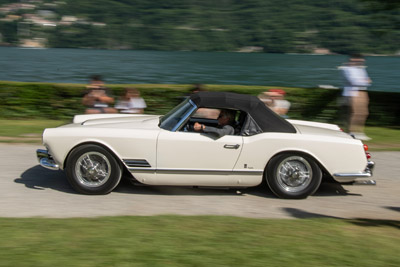 |
Class E 1966 Maserati 5000 GT FRUA presented by Henk de Vries (NL)
The Maserati 5000 GT was produced from 1959-1966 with a total of just 34 cars, making it one of the most exclusive cars of its time.The origin of this aristocratic automobile go back to an occasion at the end of 1958. The Shahof Persia, Mohammad Reza Pahlavi, was visiting Maserati and had taken a test drive in the Maserati 3500. He was highly impressed with the vehicle but thought it lacked exclusivity and considered the engine displacement on the small side.Giulio Alfieri Chief Engineer at Maserati took care of creating an ideal solution. The 3500 GT chassis was modestly reinforced and received the racing engineof the 450S. The displacement was extended to five litres and the compression ratio was reduced for everyday usability. Carrozzeria Touring designed the body for the "Shah Maserati". A second design was shown at the 1959 Turin Motor Show. No less than eight different Italian coachbuilders produced bodies for the 5000 GT. Only three 5000 GT with a design by Frua were ultimately built.
see also MASERATI 5000 GT 1962 |
|
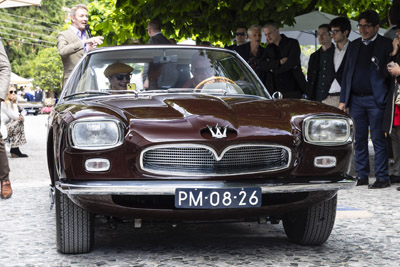 |
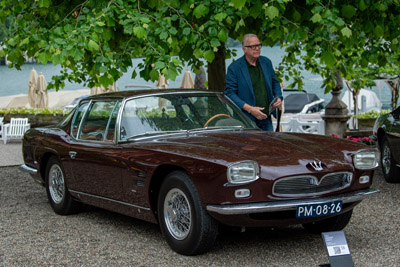 |
CLASS F: Gentlemen Drivers Style for the Fortunate Few
Class winner 1966 Ferrari 275 GTS Spider Pininfarina introduced by Christopher Stahl from Germany
The Ferrari 275 family was presented at the Paris Motor Show in 1966. The closed 275 GTB sports car built between 1964 and 1968 was supplemented by the stylistically independent Spider 275 GTS. After production of the 250 GT Cabriolet and 250 GT Spyder California had been discontinued in 1962, thre had been no open-top Ferraris in the model offering. The 275S was to close this gap in the autumn of 1964. Powered by the 3.3 litre V12 engine, the 275 GTS convertible had the drive technology and chassis of the closed 275 GTB but was styled with a completely independent body.
In 2023 at Villa Erba one 1965 Ferrari 275 GTS by Pininfarina was sold for Euros 1,411,250 at RM Sotheby auction. |
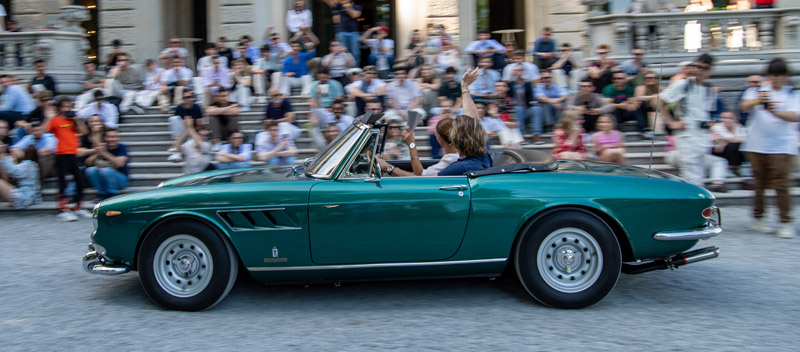 |
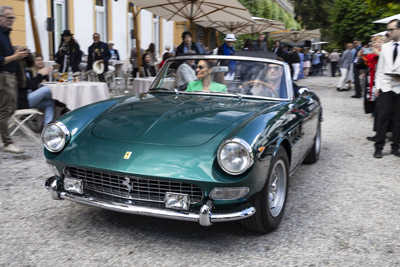 |
 |
CLASS F Mention of Honour 1955 Mercedes 300 SC Coupe Sindelfingen introduced by Sheikh Mohammed Al-Thani from Qatar
The Mercedes Benz 300 S is a two door version of the famous Adenauer 300 saloon with the engineering being derived from the saloon. The car first debuted at the Paris Motor Show in October 1951 and it could be ordered as a coupé, cabriolet or roadster. The wheelbase of the 300S was 15 cm shorter than that of the saloon. The Mercedes Benz 300 SC was launched in 1955 with almost identical bodywork but the SC boasted significantly more chrome. The engine was equipped with fuel injection rather than three carburettors of the 300S and provided an additional 25 hp. Only 98 coupés were built between January 1956 and July 1957. |
|
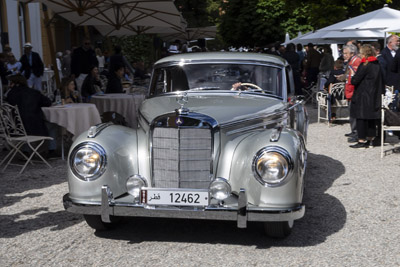 |
 |
CLASS F: 1957 BMW 507 Roadster with Hard Top introduced by Harrie van den Anker (NL)
The BMW 507 propelled by dual-carburetted V8 engine was a roadster with body designed by by Albrecht Graf von Goertz . The German designer lived in New York where he had learnt a great deal from industrial designer Raymond Loewy. The BMW 507 was unveiled together with the BMW 503 at 1955 IAA InternationalMotor Show in Frankfurt. It made a real change in BMW activities known for Isetta small and popular cars.
see also BMW 507 Roadster 1956 1959
One of 252 examples produced. In 2020, one BMW 507 Roadster Series II was sold for Euros 1,996,250 at RM auction in Paris. In Monaco one 1958 BMW Serie II with Hard Top was sold for Euros 2,030,000 at RM Sotheby auction in Monaco. |
|
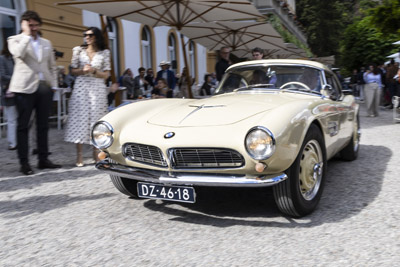 |
 |
CLASS G: Time Capsules: Cars that the Outside World forgot
Class winner: 1932 Alfa Romeo 8C 2300 Spider Figoni presented from Private Collection Belgium |
|
Class G: Mention of Honour 1928 Bugatti Type 35C Grand Prix introduced from Auriga Collection Germany
see also Bugatti Type 35 and Derivatives 1924 1931 |
|
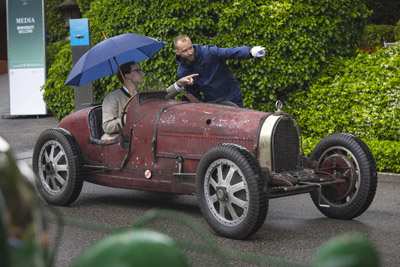 |
 |
| Class G: 1957 Ferrari 250 GT Coupe Boano introduced by Ulbe Hempenius (NL) |
|
Class G 1967 Fiat Dino Aerodinamica Berlinetta Concept Pininfarina proposed by Lee Hower from United States
The Ferrari Dino 2 Litre V6 engine came into being as Ferrari was planning to compete in the Formula 2 Championship. According to the homologation regulations for the 1967 season, the engine would have to be production based and come from a road car with at least 500 units manufactured per year. The solution was for the Ferrari designed engine to be produced by Fiat in Turin. Fiat used the same Ferrari 2 Litre V6 engine in its two rather upmarket sports cars and the engine was also installed in the Ferrari Dino 206 GT launched in the marketplace in 1968. The Fiat Dino Spider designed by Pininfarina was first marketed in 1966. The coupé version was designed by Bertone and built on a wheelbase longer by 270 mm and the sports car was first shown in 1967.
The Ferrari Modulo from 1970 was Paolo Martin's best known design but he also penned this prototype of the 'Dino Berlinetta Concept Aerodinamica' for Pininfarina. The study was unveiled at the Paris Motor Show 1967. The project looked very much like a shooting brake. The design was revised for the Geneva Motor Show 1968. |
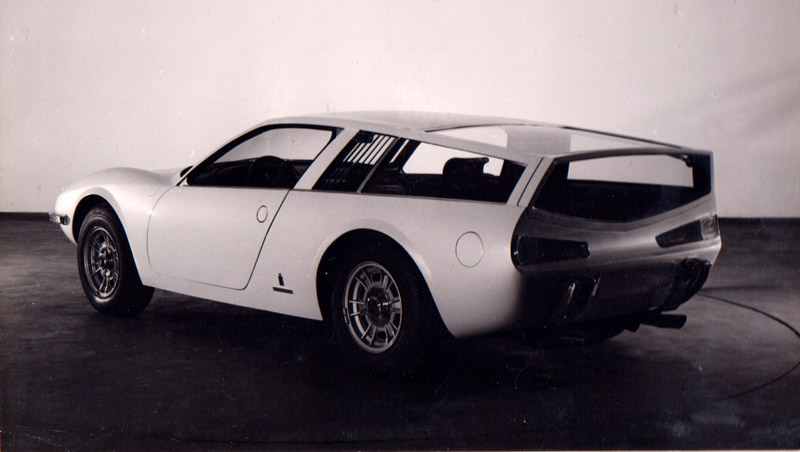 |
 |
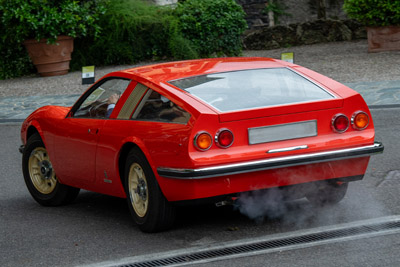 |
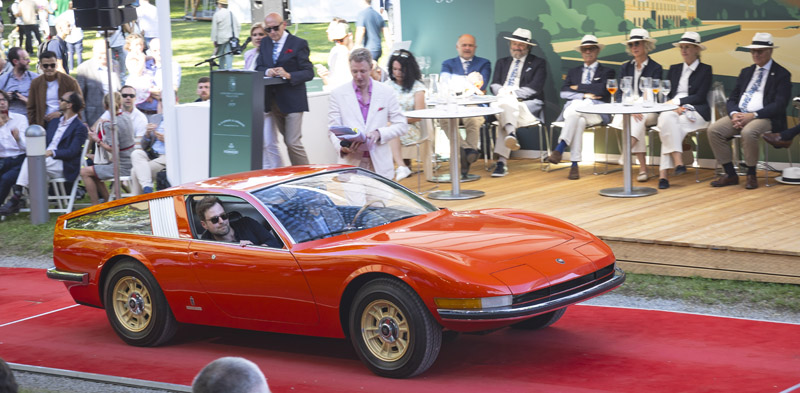 |
CLASS H: The Need for Speed Supercar Stars of the Video Generation
Class winner 1995 McLaren F1 V12 Coupe introduced by Tony Vassilopoulos from United Kingdom also TROFEO Coppa d'Oro Villa d'Este by public Referendum |
 |
Class H: Mention of Honour 1988 Porsche 959 Komfort Coupe introduced by Todd Blue from United States
see PORSCHE 959 1987 1988 |
 |
CLASS H: 1999 Lamborghini Diablo GT introduced by Jose Cobian (MX)
With total Diablo production estimated at 3,000 cars, it is self-evident that the GT—accounting for less than three per cent of this figure—represents a very rare beast indeed. The Lamborghini Diablo GT introduced at 1999 Geneva Motor Show was produced at 80 examples only. One 2001 Lamborghini Diablo GT was sold for Eu 612,500 at 2022 RM sotheby auction in Monaco while a 1999 Lamborghini Diablo GT was sold for £ 515,200 at 2016 RM Sotheby London auction. |
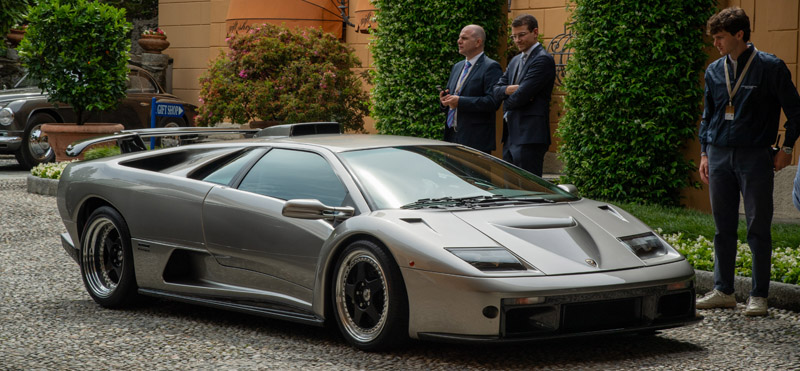 |
Class H: 1976 Lamborghini Countach LP400 introduced by Christine Schorms from United Kingdon.
The flamboyant purple Lamborghini Countach was delivered new in 1976 to Princess Dalal bint Saud Al Saud, the daughter of King Saud of Saudi Arabia. This legendary car was a lavish birthday present , ordered in her favourite colour purple-"Viola Salchi"- and finished with a white leather interior.
see also Lamborghini Countach by Bertone 1971-1978 |
|
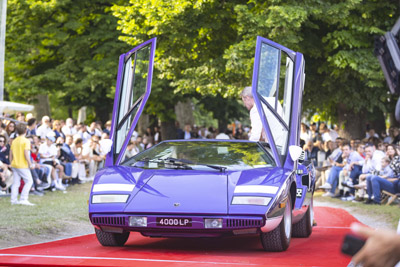 |
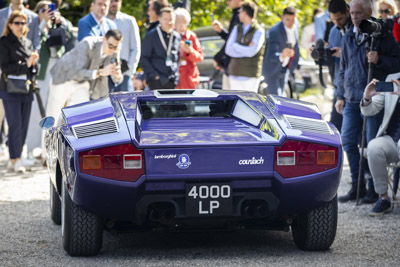 |
|
Concept & Prototypes : Koenigsegg CC850 2022 introduced by Koenigsegg Sweden
Twenty years ago the introduction of the Koenigsegg’s first production car, the CC8S, defined the new “megacar” category. Today, in celebration of the CC8S’s 20th anniversary, the Koenigsegg CC850 was unveiled. The CC850 is a contemporary reimagination of the Koenigsegg CC8S. It is also a dual tribute for Koenigsegg, celebrating 20 years of vehicle production, as well as the 50th birthday of the company’s founder and namesake, Christian Von Koenigsegg. As such, CC850 production will be limited to just 50 cars worldwide. |
|
 |
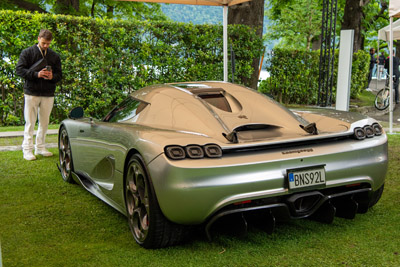 |
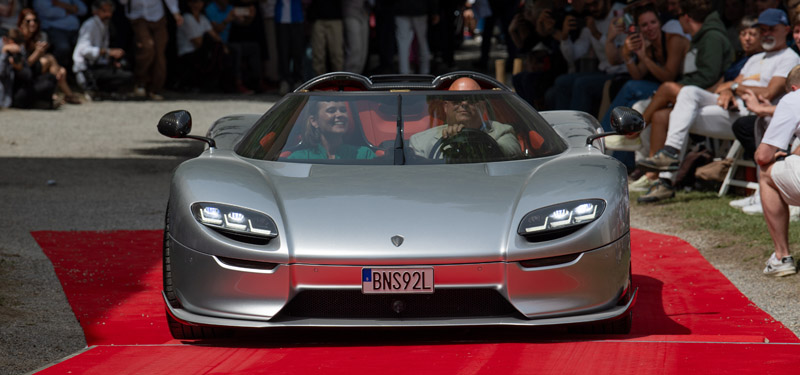 |
| Concept & Prototypes: Pininfarina Pura Vision 2023 - see Pininfarina ePura Vision Electric Luxury Utility Vehicle 2023 |
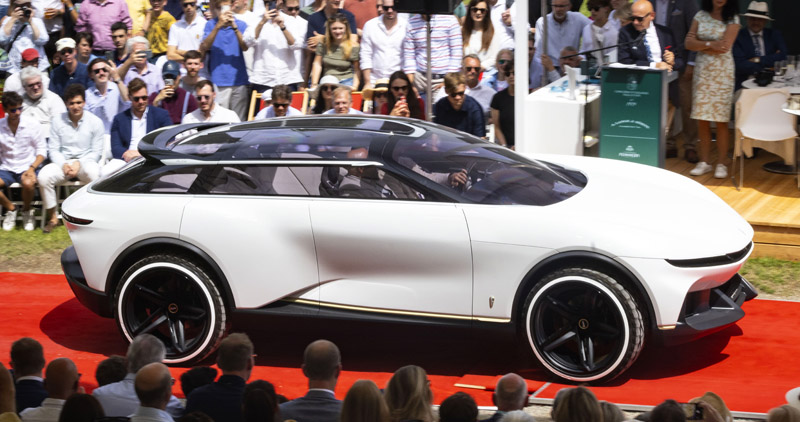 |
 |
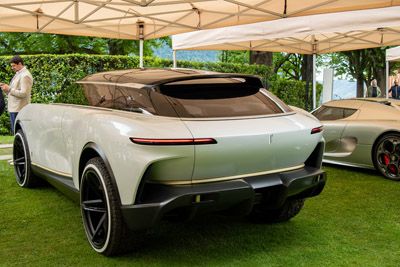 |
Concept & Protoypes ALPINE ALPENGLOW Concept 2024
Alpine Alpenglow Hy4: a rolling prototype with a hydrogen-powered internal combustion engine
Following on from the Alpine Alpenglow concept car presented at the 2022 Paris Motor Show, the Alpine Alpenglow rolling lab Hy4 proves by running on a racetrack that performance and sustainable development are compatible, with the added thrill of the sound of an internal combustion engine. Its name combines the notion of hydrogen ‘Hy’ and 'four' for 4 cylinders. |
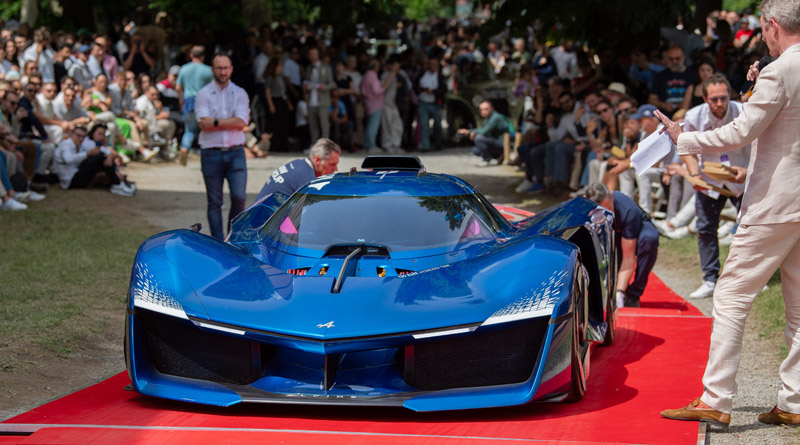 |
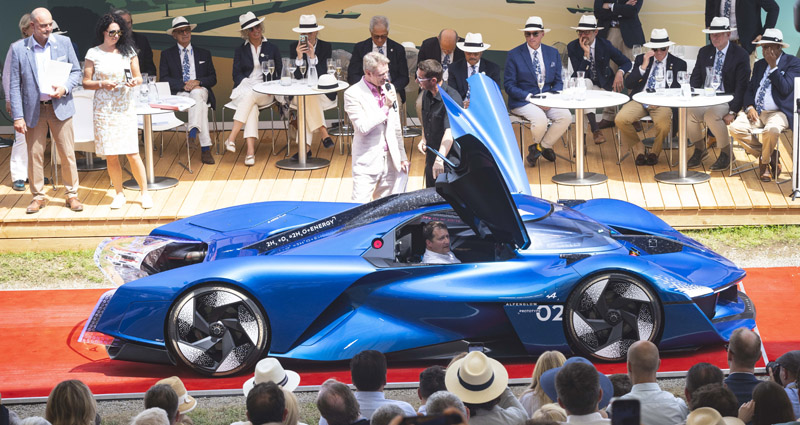 |
 |
 |
| |
|
| |
|






